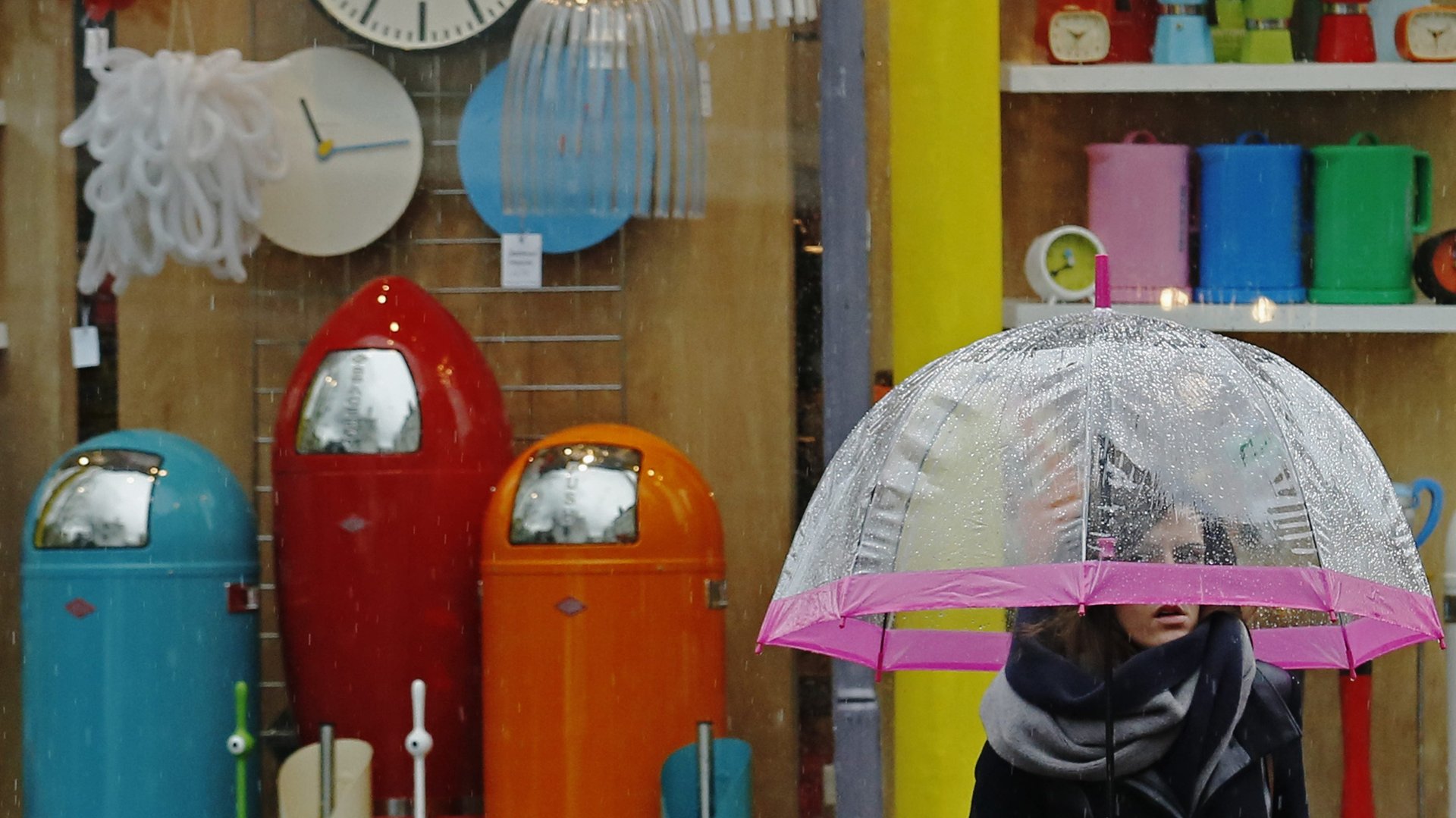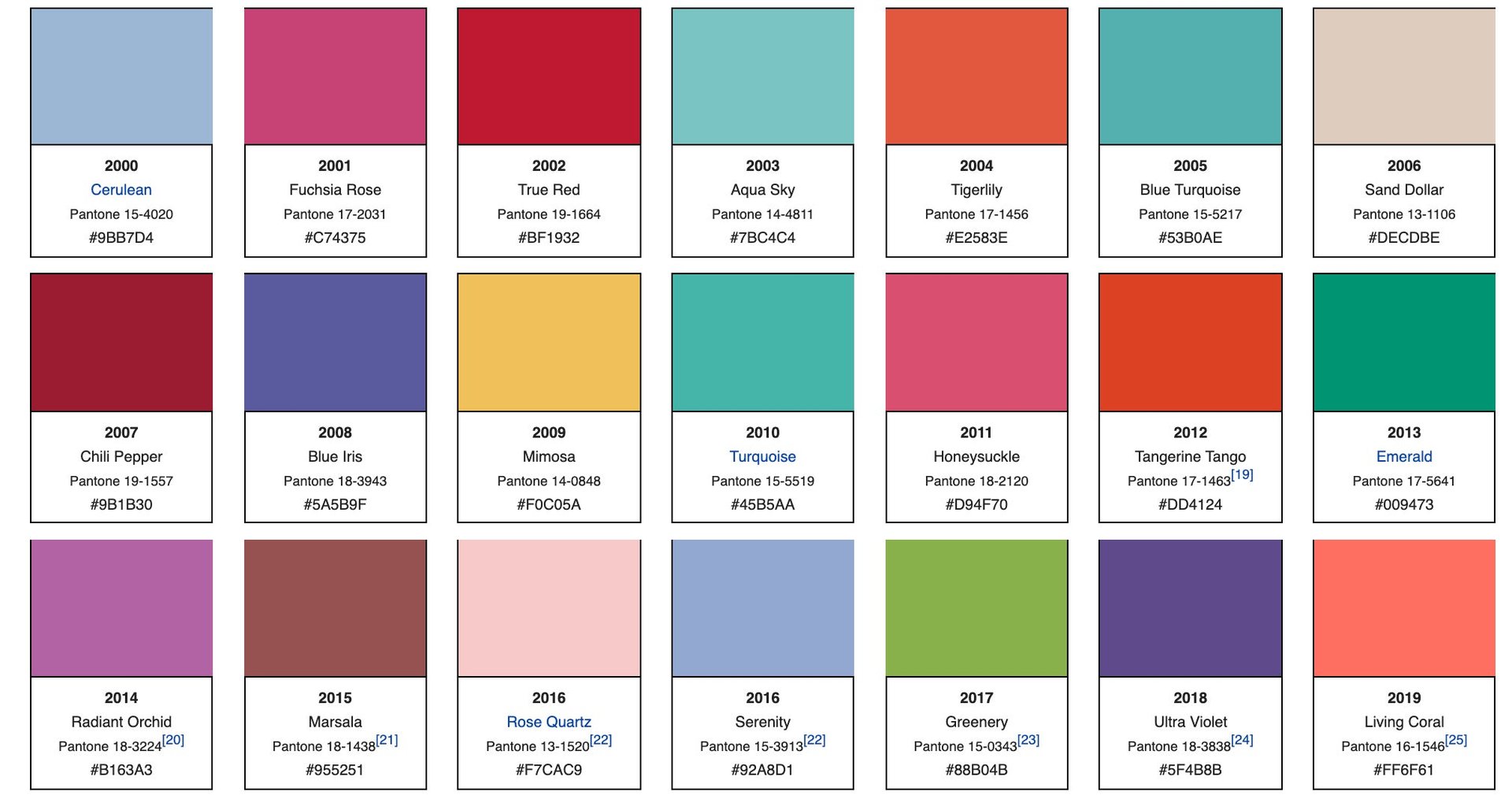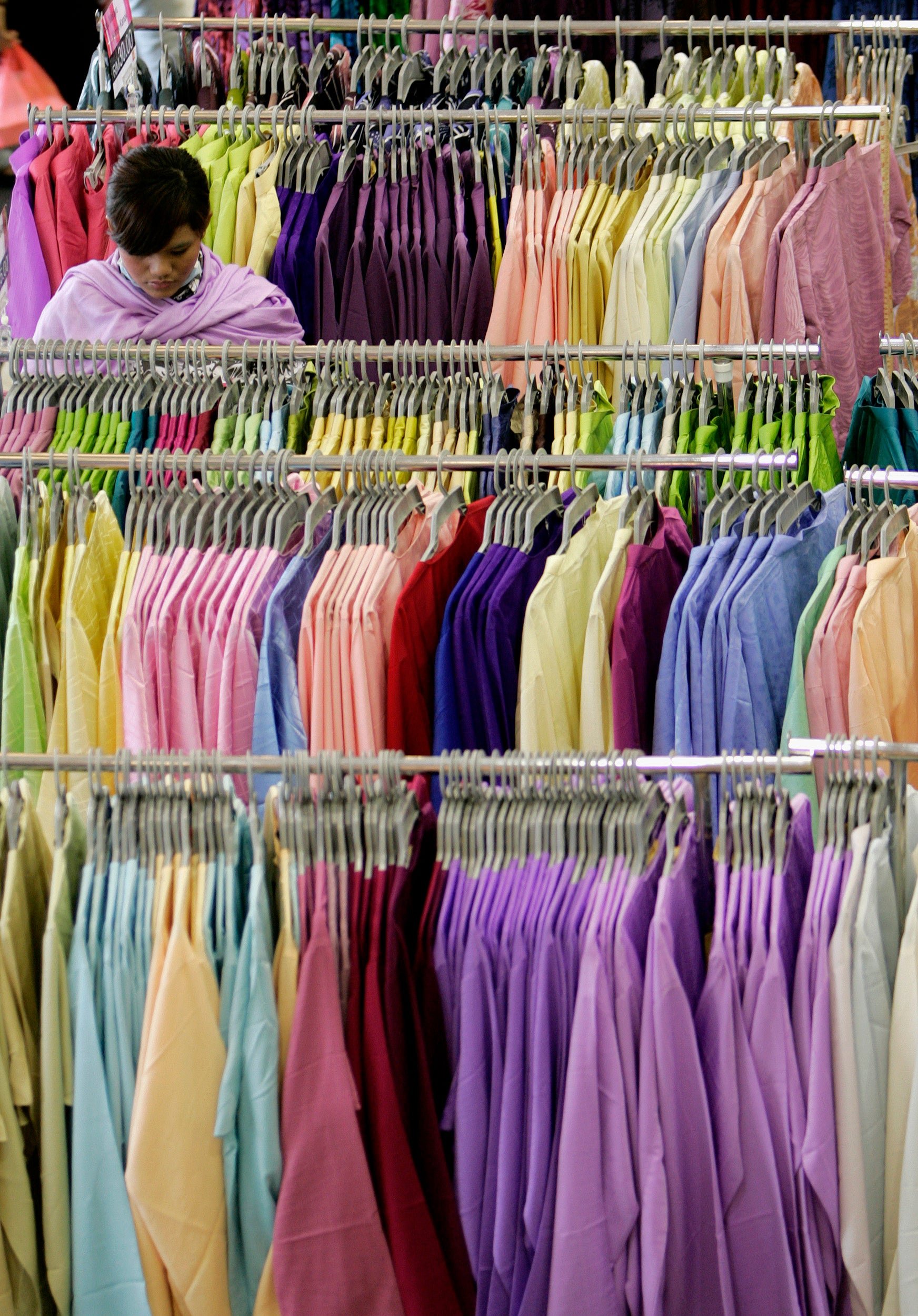It’s time to retire “color of the year”
It’s that time of year when color-oriented companies queue their picks for color of the year. At a splashy unveiling party in New York last week, paint company Benjamin Moore crowned a pinkish white—or “First Light“—as the color of 2020. Rival paint brands picked their own colors too. Behr chose “Back to Nature,” a muted green, and Sherwin Williams “Naval,” another way to describe navy blue. Color fans are already speculating about color standards company Pantone’s 2020 pick.


It’s that time of year when color-oriented companies queue their picks for color of the year. At a splashy unveiling party in New York last week, paint company Benjamin Moore crowned a pinkish white—or “First Light“—as the color of 2020. Rival paint brands picked their own colors too. Behr chose “Back to Nature,” a muted green, and Sherwin Williams “Naval,” another way to describe navy blue. Color fans are already speculating about color standards company Pantone’s 2020 pick.
How did color become so newsworthy? The interest in color trends may have started 20 years ago, when a marketing whiz at Pantone came up with a way to inject excitement into the otherwise sedate color standards business. Starting with Cerulean—a blue violet shade that is said captured the angst about Y2K—Pantone’s”color of the year” announcement has become a breaking news story that is covered by major media outlets. The 57-year-old company’s yearly pick is portrayed as a reflection of the global mood. It reaches a wide audience, much beyond design circles.
Pantone’s “color of the year” marketing blitz has been so successful that other companies followed suit. This year, even Xerox joined the corporate color name game. In a desire to stand out, the workplace solutions company announced that it had chosen “Clear” as its color of the year—blithely glossing over the fact that the “color of fishbowls, windows and cellophane” isn’t technically a color. As a colleague aptly said, “it’s like naming water as wine of the year.” Clearly, it’s a stretch.
Even Pantone appears to be struggling to come up with interesting new angles on each new year’s defining color. Consider some of its color picks over the years. To a non-professional, Tigerlily and Tangerine Tango are almost interchangeable, and could even be grouped with last year’s Living Coral. Pantone selected various shades of turquoise in 2003, 2005, and 2010, while 2015’s Serenity could easily be mistaken for the Cerulean of 2000, the first ever color of the year. Blue Iris is strikingly similar to Ultra Violet, a shade inspired by the late pop idol Prince.

Color trends are not based on empirical surveys. They’re selected by committees who intuit the color of the moment. Then, they’re propagated by elaborate marketing campaigns. Pantone’s color prediction is, in part, a self-fulfilling prophecy. Months before the unveiling in December, it enters into licensing agreements with various companies—from nail polish to hotel suites—in order that the exact hue materializes in various guises. Suddenly, the color of the year is everywhere.
Colors and consumerism
The logic of a new “it color” every year is undeniable: color drives consumerism.
A 2015 study by the Color Marketing Group posits that 85% of consumers base their purchasing decisions on a product’s color. Kraft Heinz’s 2000 bottom line offers proof of this tendency. The food and beverage corporation added green coloring to its ketchup recipe as an advertisement for the movie Shrek and managed to sell millions of the “Blastin’ Green” variety. Delirious from the robust sales numbers, Heinz introduced more rainbow condiments—orange, purple, teal, blue, pink ketchup—and sold 25 million bottles, before discontinuing the line in 2006.
Similarly, Apple’s enthusiastic leap into new colors is all about sales. The annual update on iPhone colors for instance, is meant for consumers to covet a new phone every year, according to Fast Company. In a similar fashion, color of the year schemes are designed to create obsolescence, hastening the three-to four-year lifespan of most color trends. After a few months, a perfectly functional object is suddenly rendered passé because it’s in last year’s color. Previous year’s Pantone-branded cosmetics and coffee mugs for instance, are heavily marked down.

Natural patina as a meaningful color trend
Meanwhile, another color trend is taking hold in design circles. Instead of dutifully following along the lines dictated by color companies, interior designers such as Robin Standefer and Stephen Alesch are championing the virtue of patina or “living finishes,” as they call it. The duo, who run the influential New York design studio Roman & Williams, are working with the UK paint brand Farrow & Ball.
“I think there’s a movement towards colors that change over time,” says Alesch. “It’s always cringey when people hear the word ‘patina’ because it feels false. But the point is to never add [faux] patina. It happens so rapidly and naturally that you don’t have to think to it.” Pointing to a nearby oak table, Alesch notes how sunlight and human touch have gradually darkened its color in a matter of months. “It just adds this layer that’s very organic.” Standefer adds, “I think good color gets better with age. To see the evolution of color is astounding.”
Embracing nature’s effect also animates London-based architect and designer Rabih Hage’s “rough luxe” approach. A proponent of showcasing naturally distressed detail in his interiors, he describes patinated surfaces as bearers of a history that can never be mass marketed. “The wall is more luxurious because it’s part of the spirit and the soul of the house,” Hage said, describing his work on a budget hotel project in London. “It’s irreplaceable, inimitable and it’s authentic.”
Nurturing a desire for patina is an antidote to the disposable culture and planet-polluting cycles of design production for the sake of novelty. Color companies could perhaps pour marketing resources into educating the public about the practical application of color. Brands could work with color blind populations, fund research to test optimal hues for healthcare environments, or spotlight chromatic solutions to transform urban environments. Color is a powerful tool, especially when used in the right way.